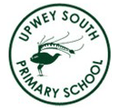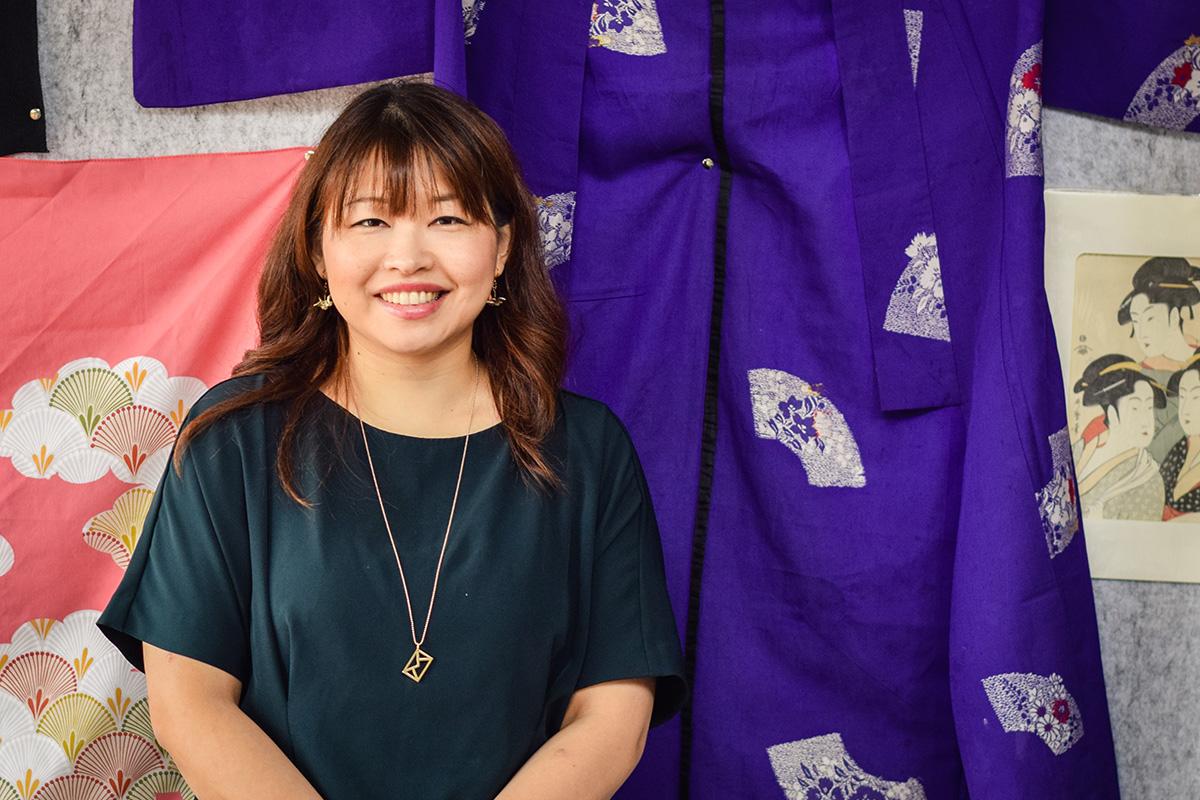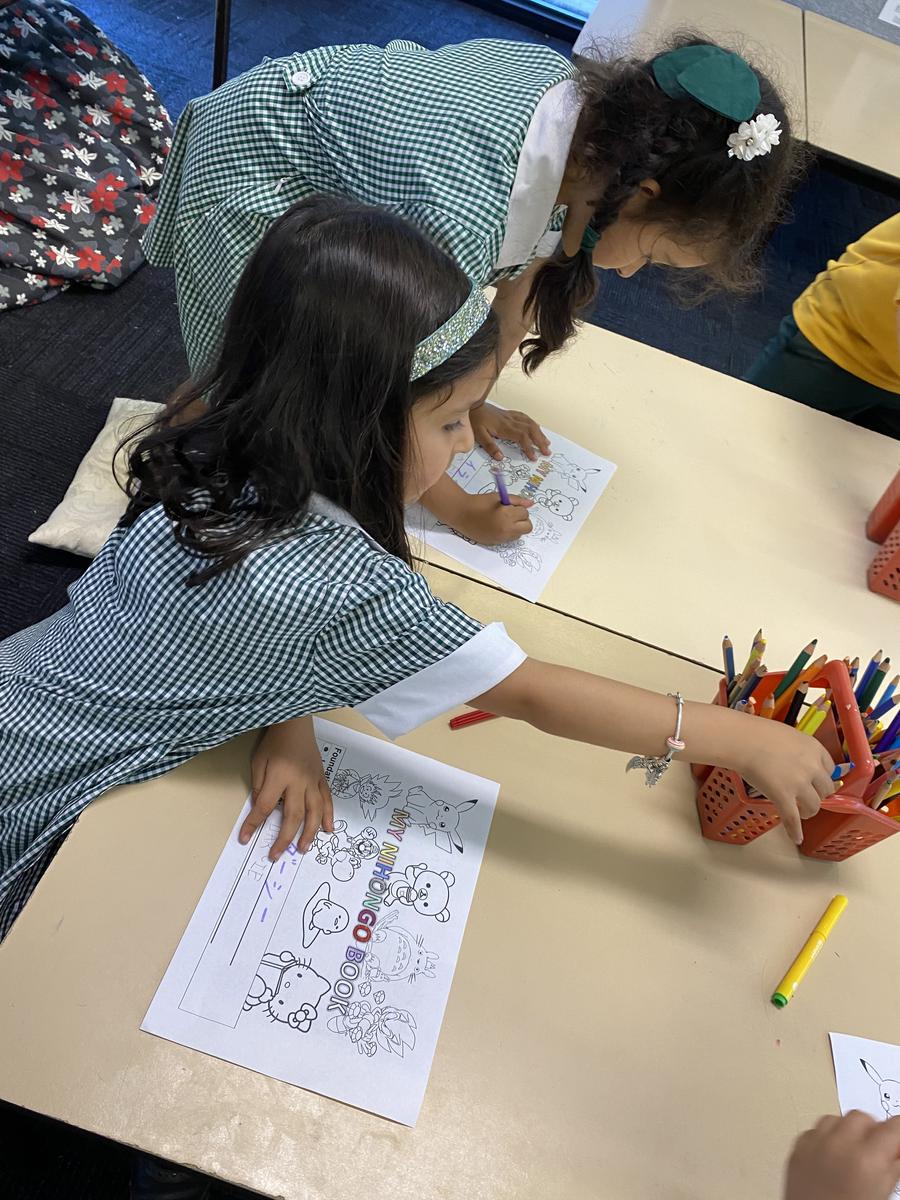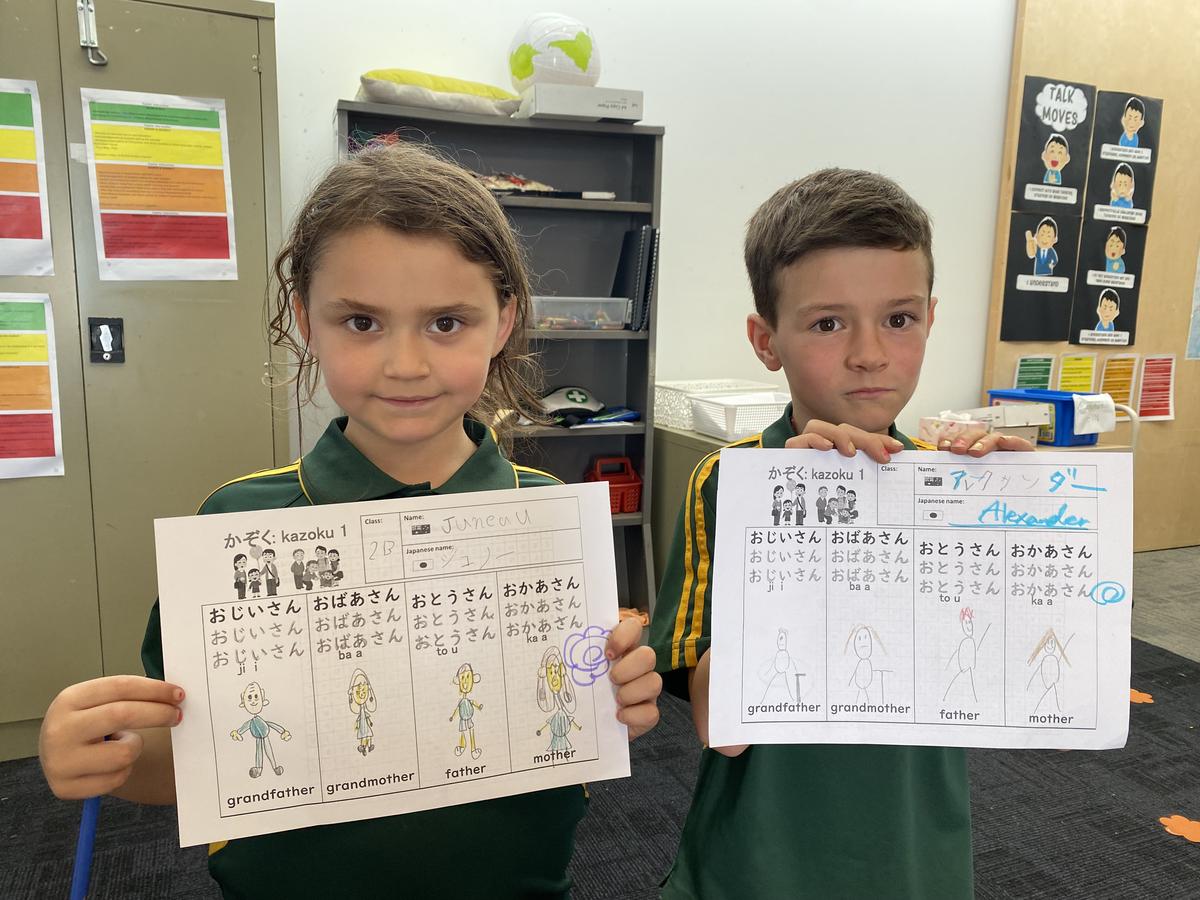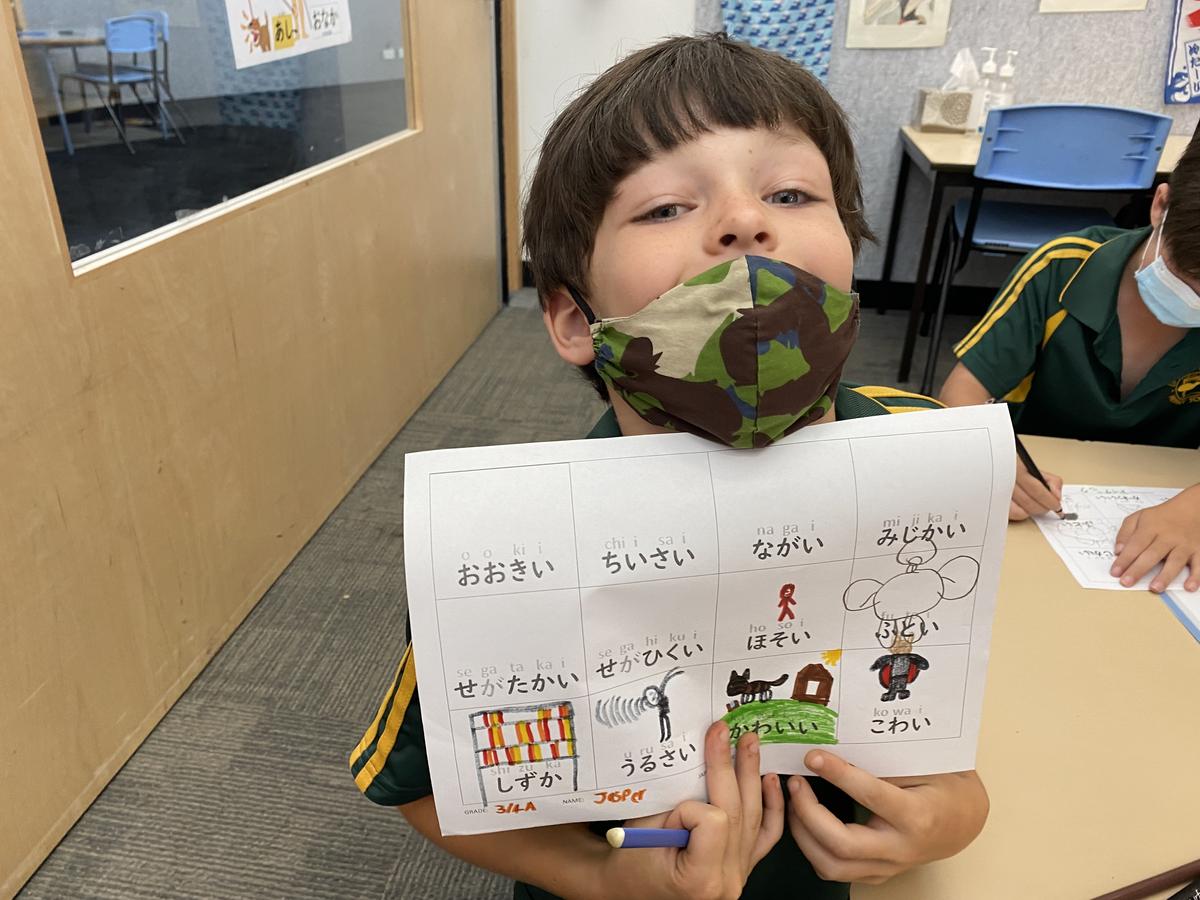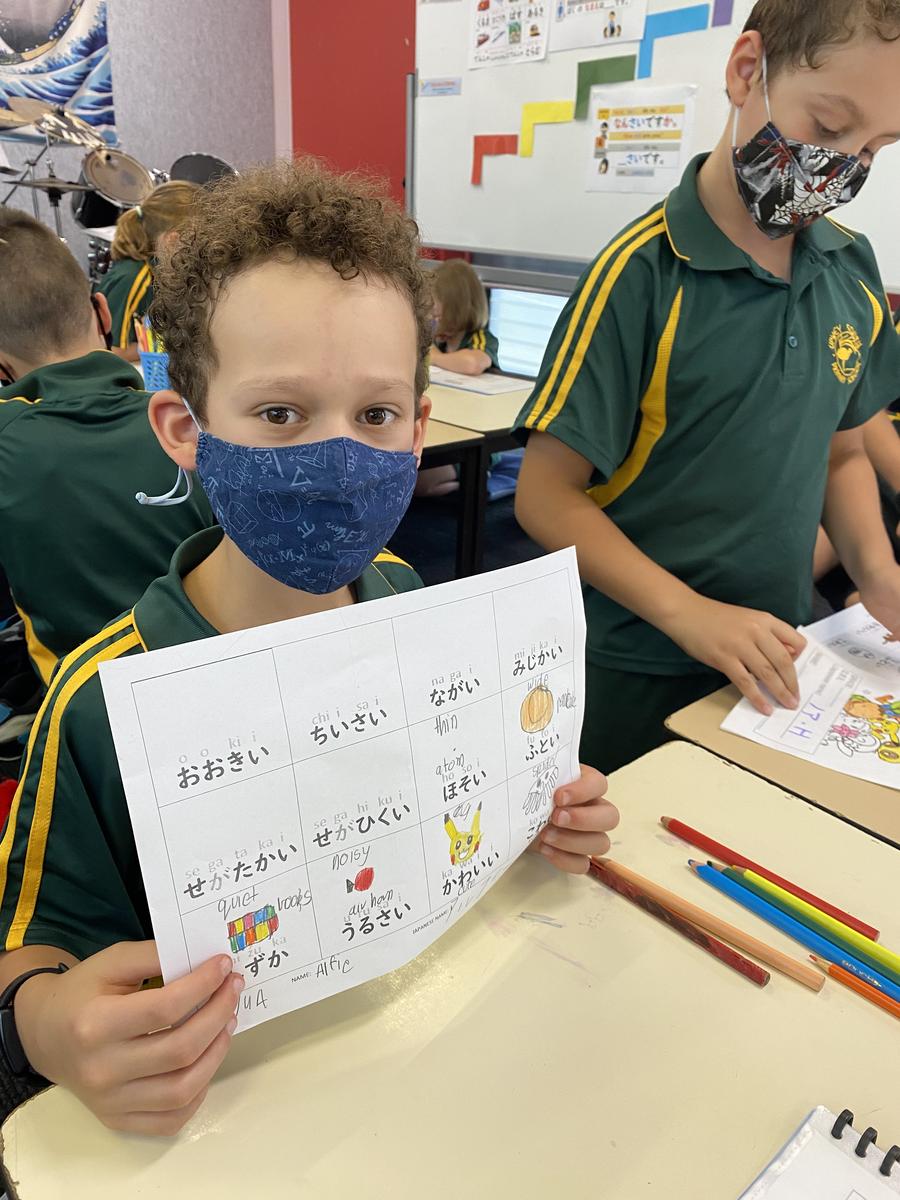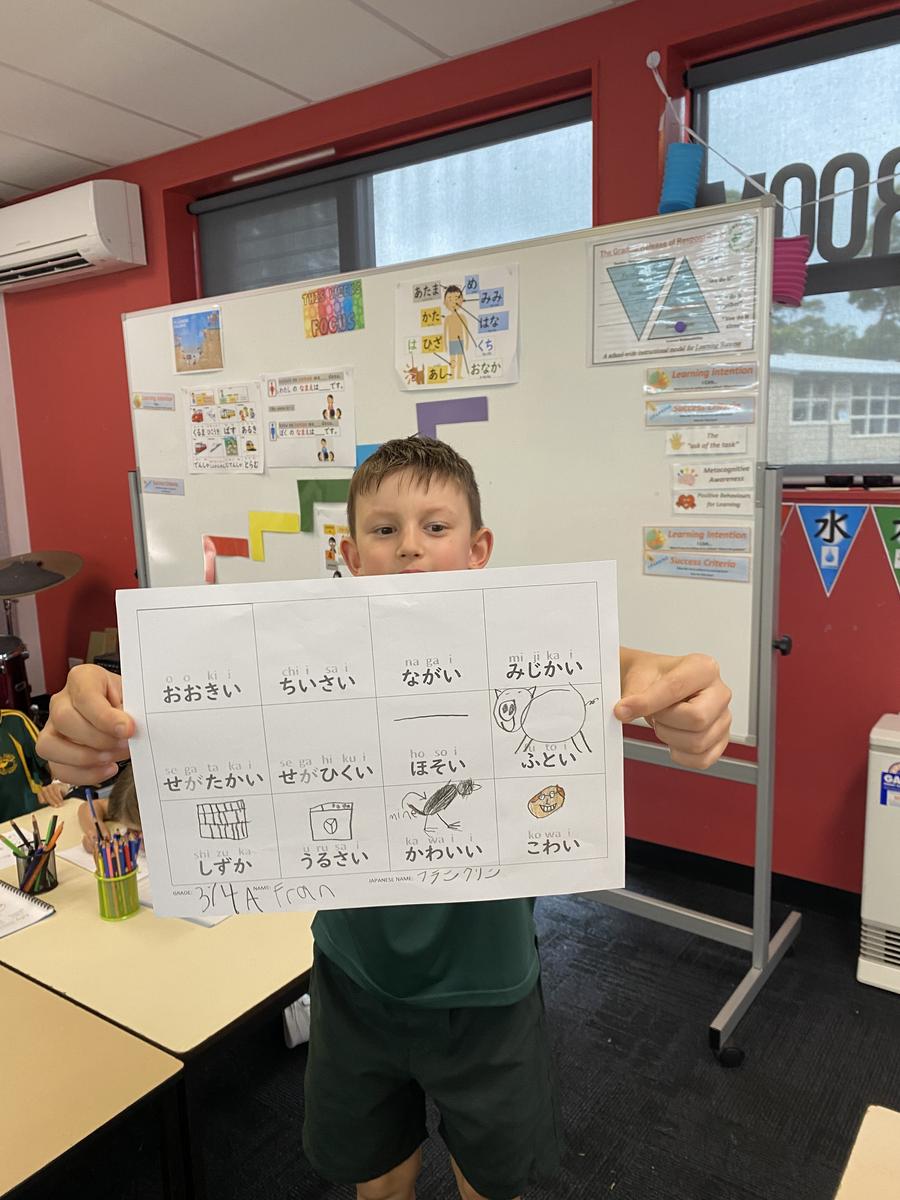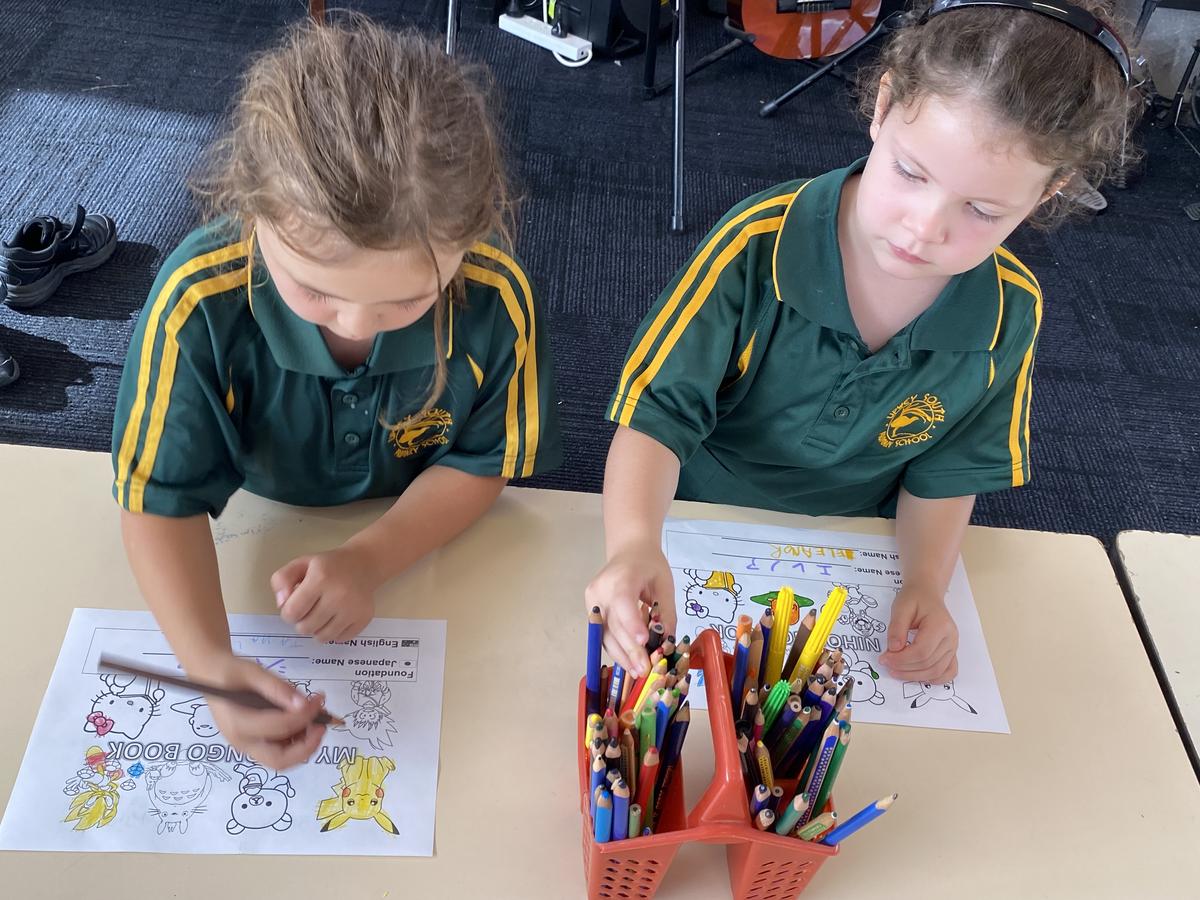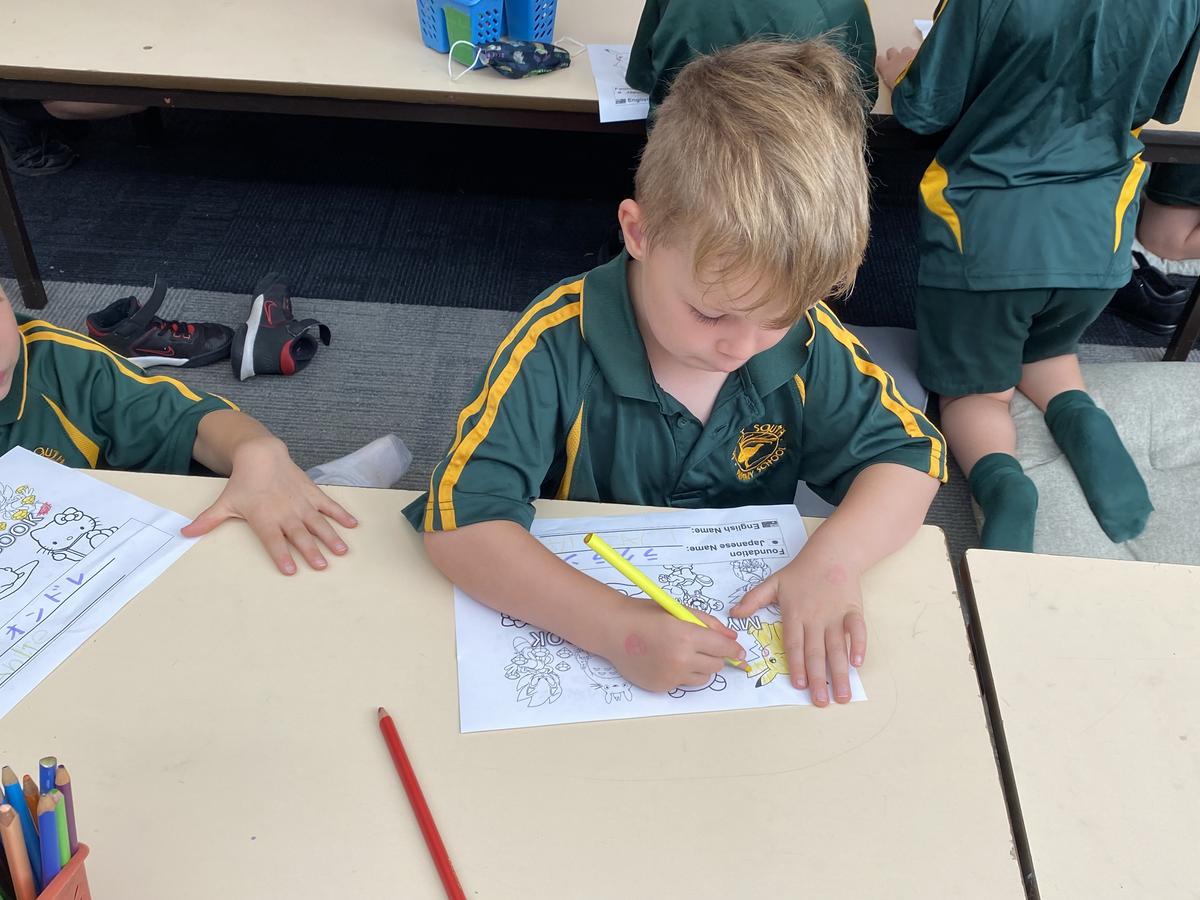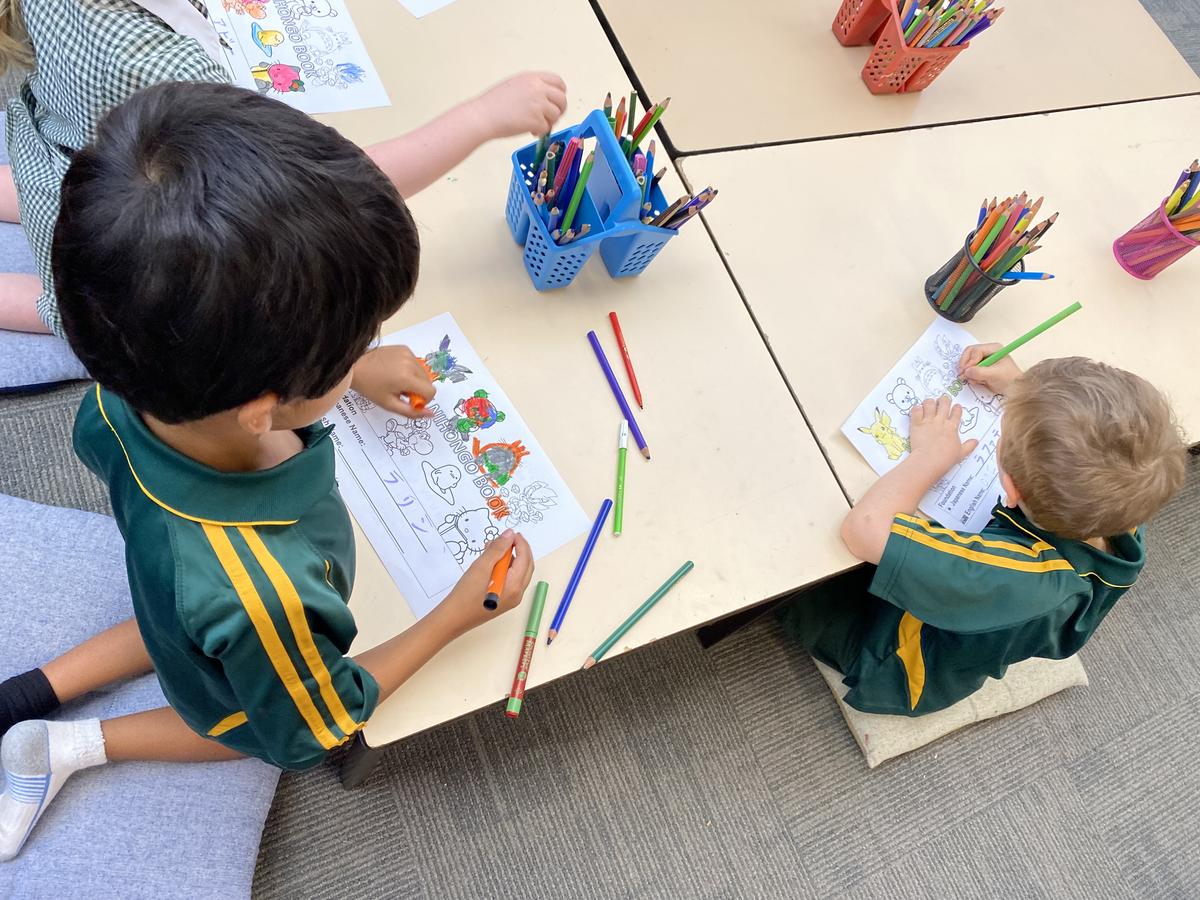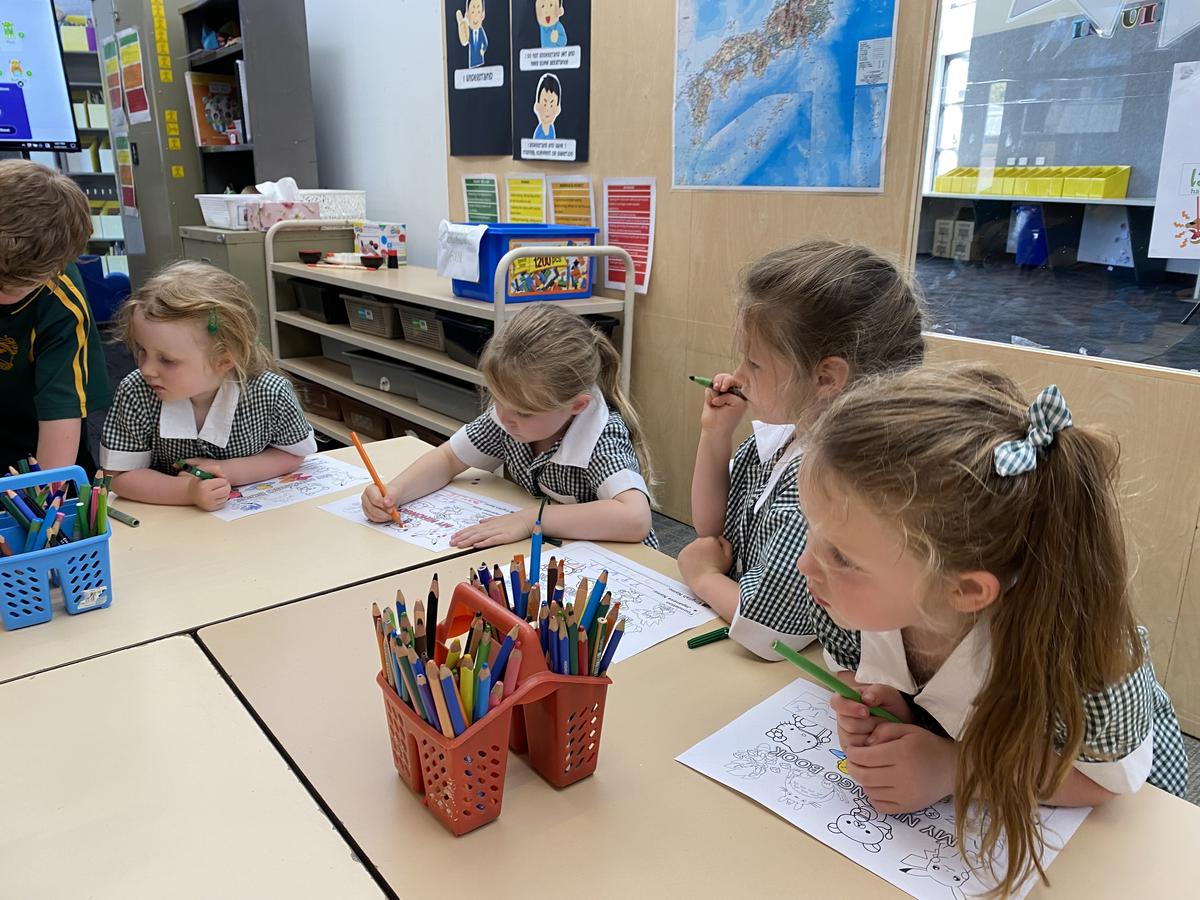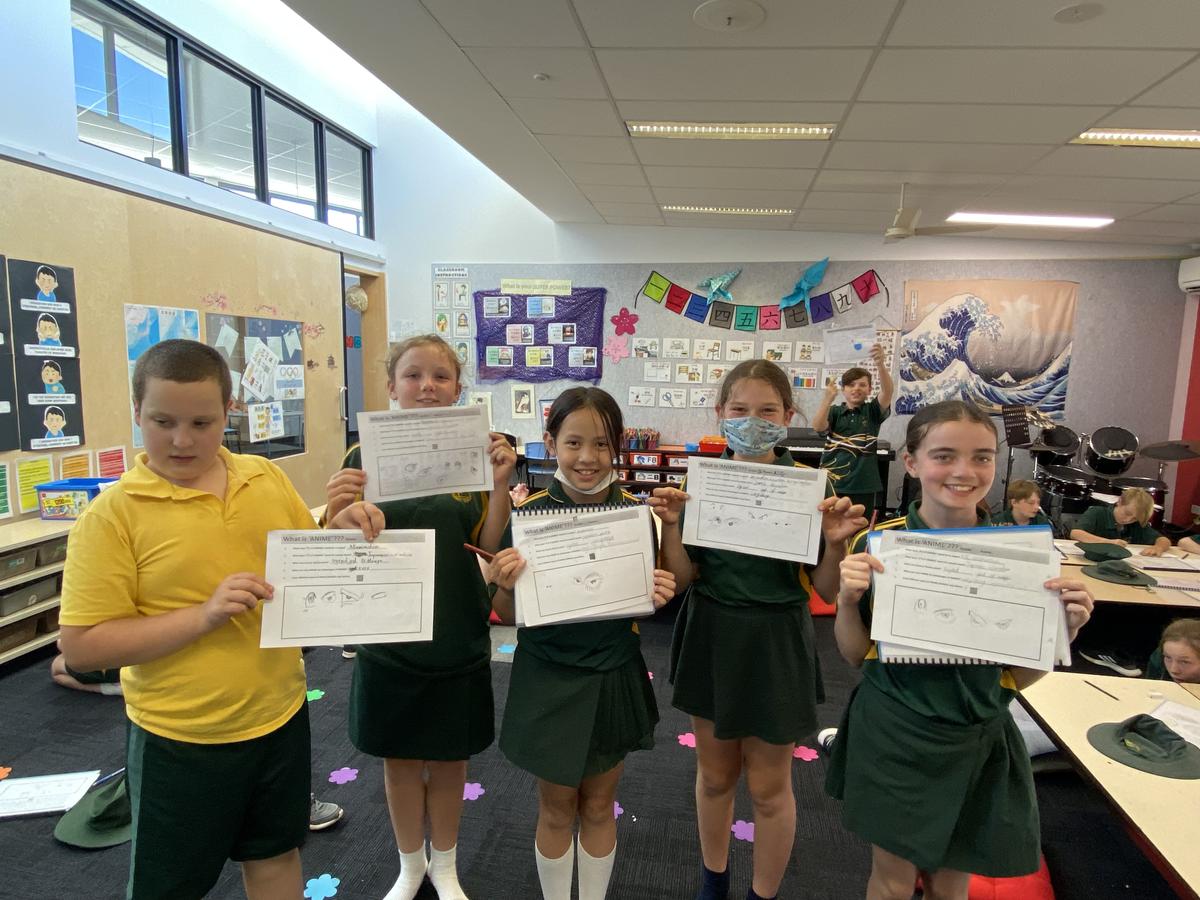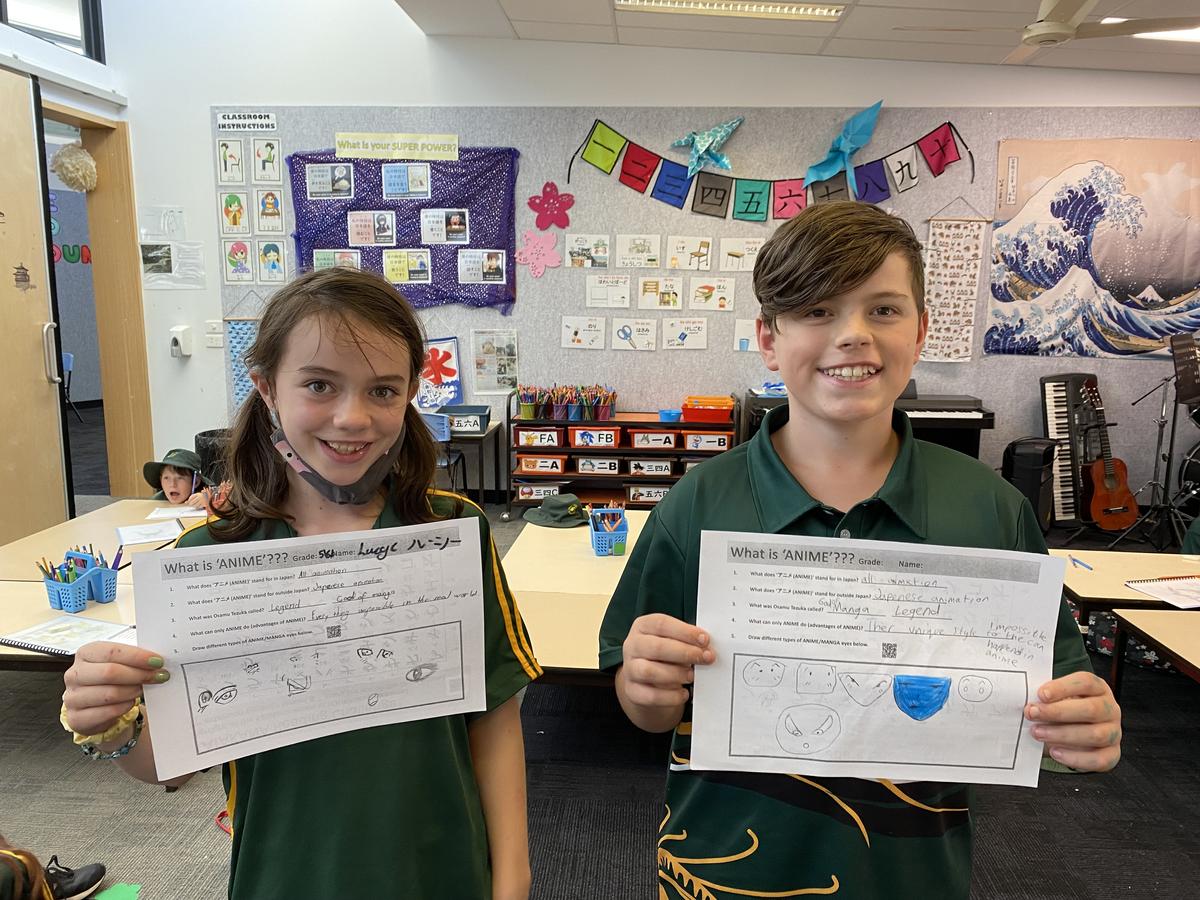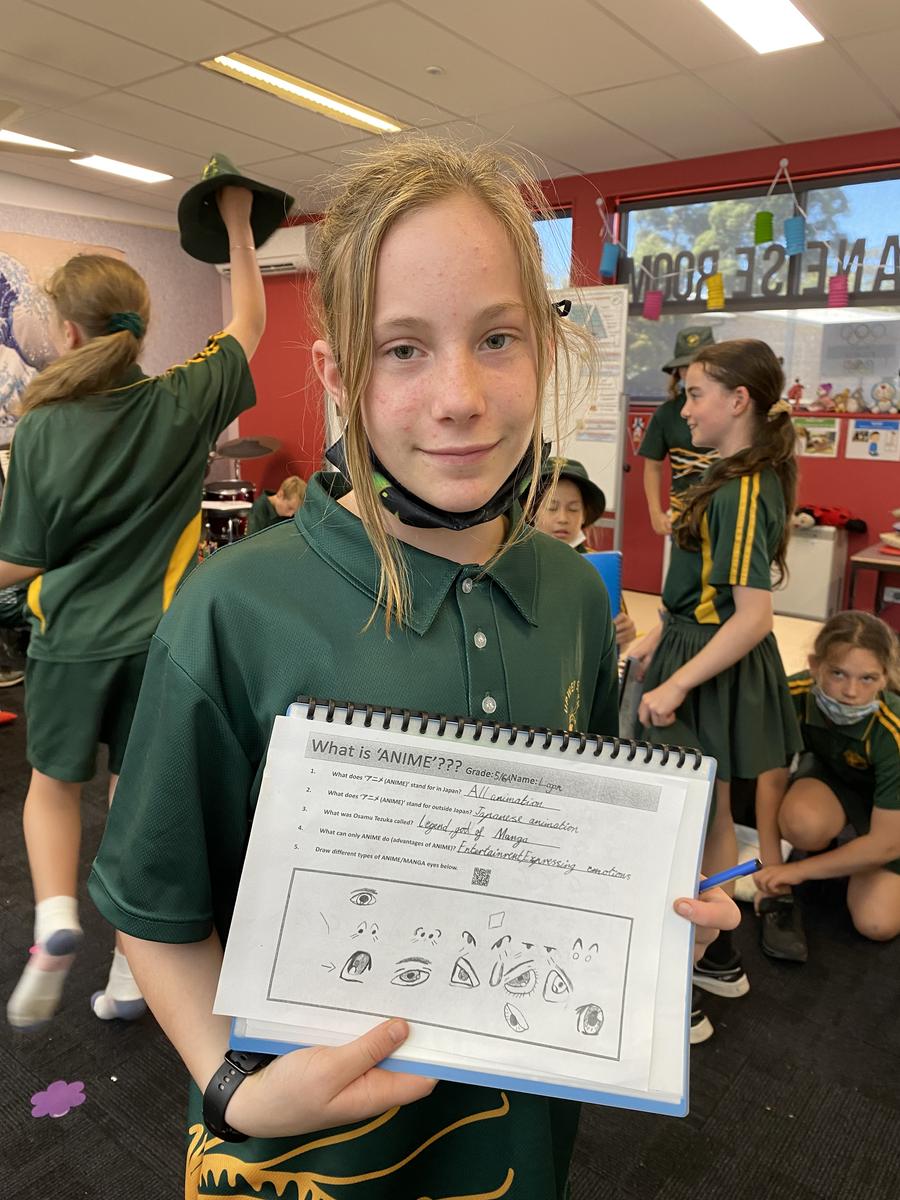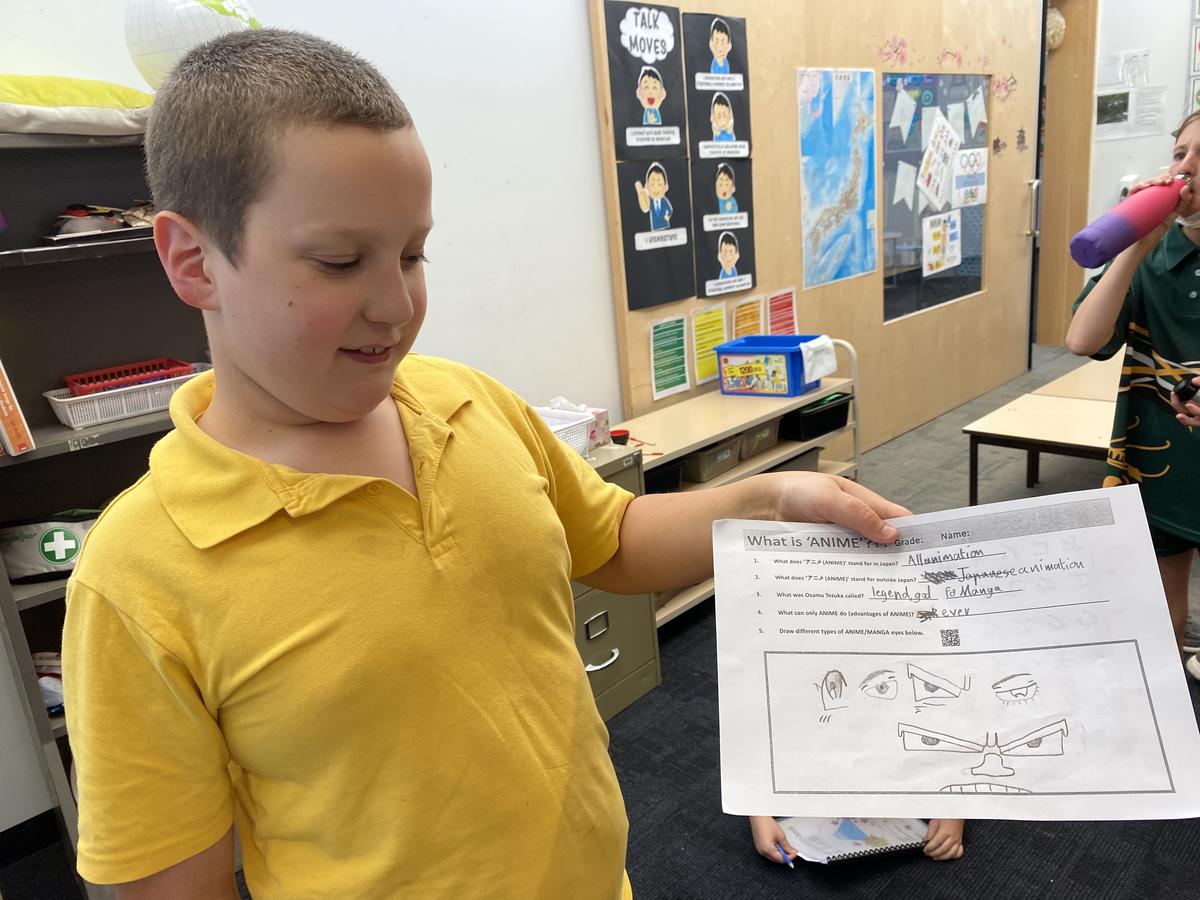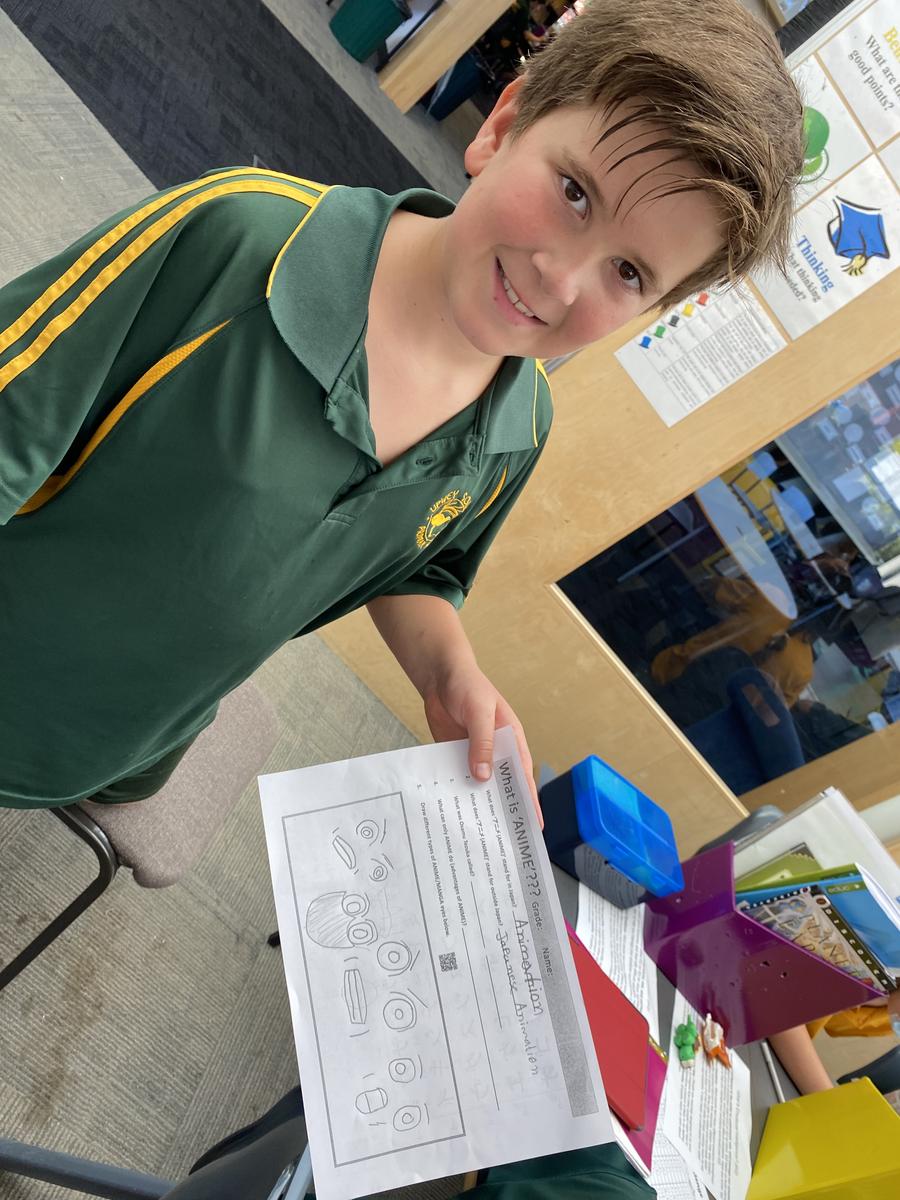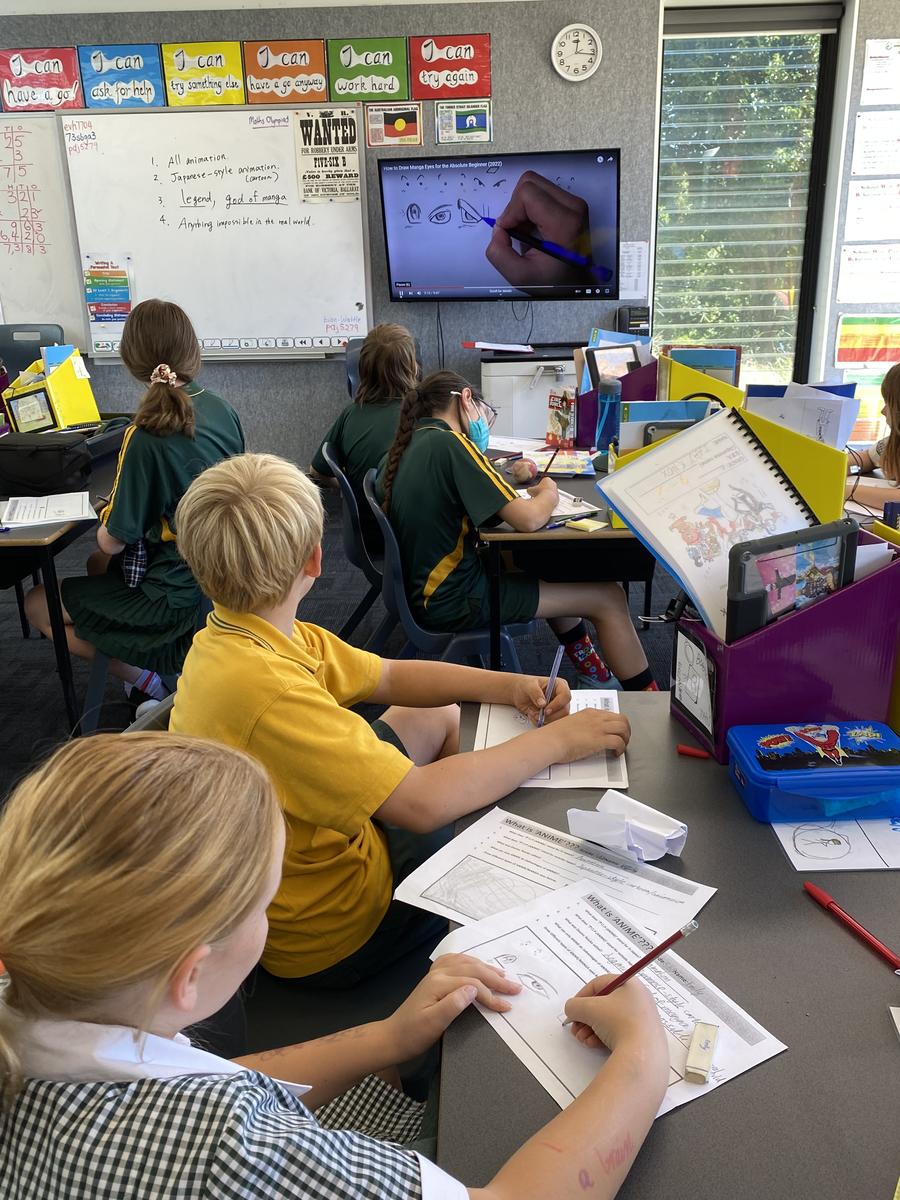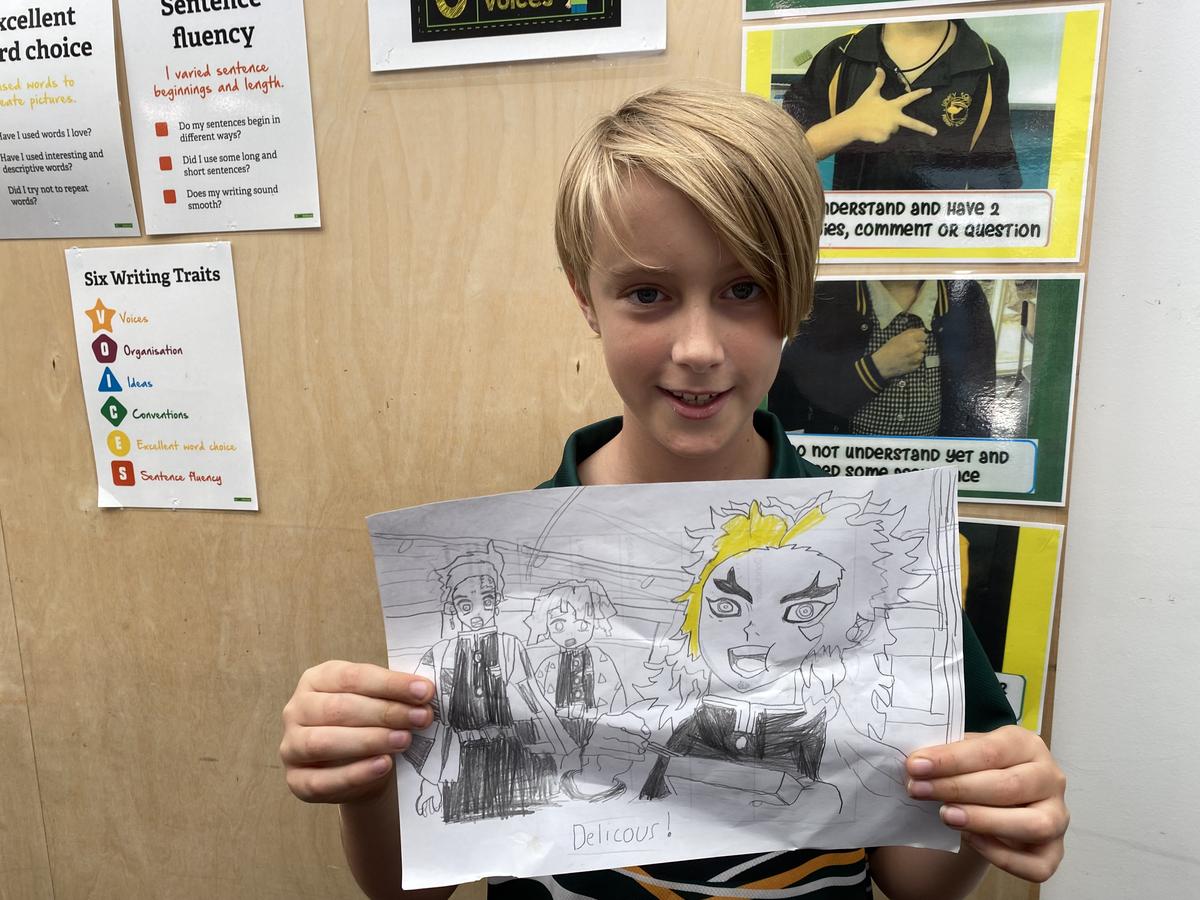Languages- Japanese

Communicating with the Specialist Team
We look forward to partnering with you in 2022, and welcome your input:
Sensei Masae Uekusa (Japanese) Masae.Uekusa@education.vic.gov.au
Konnichiwa, minasan! (Hello, everyone!)
‘YOKOSO’ (Welcome) to the Upwey South Japanese Room!
The following are the Japanese activities our students worked on during week 5 and 6.
Foundation:
Foundation students are getting used to ‘switching on’ their Japanese language button in the Japanese room and whenever they see Masae-sensei! The students have been singing the Japanese greeting song enthusiastically and using the phrases more often. They also started answering the greeting question: ‘genki desu ka (How are you?)’ and answer with either ‘genki desu (I am well/good)’ or ‘genki janai desu (I am not well)’. In their second lesson, they learned their Japanese name in Katakana script and some students already started writing their name by copying it! Well done!
Year 1&2:
In term 1, Year 1 and 2 students continued to practise family words such as ‘かぞく’ (kazoku: family), ‘おじいさん’ (ojiisan: grandfather), ‘おばあさん’ (obaasan: grandmother), ‘おとうさん’ (otousan: father), ‘おかあさん’ (okaasan: mother) and learnt 2 new words; ‘おとうと’ (otouto: younger brother) and ‘いもうと’ (imouto: younger sister). They practised these words with the help of the family song, some quizzes and a word search. They all contributed to the class discussion and expressed the common letters and sounds amongst the words. Great job!
Year3&4:
Year 3 and 4 students have been very creative with their adjective charts during week 5 and 6. They learned 12 adjectives with lots of visual cues and played with the sounds. The students decorated their chart with their original pictures to make it memorable and easy to find the right words. The students also applied these adjectives to address their opinions in a simple sentence such as; ‘Pikachu wa kawaii desu (Pikachu is cute)’. Fantastic effort!
Year 5&6:
Year 5 and 6 students have been learning more about ‘ANIME’ and ‘MANGA’. They discussed about the definition, history and features that can be seen in majority of ‘ANIME’ and ‘MANGA’. Since there are lot of words and onomatopoeia (sound effects) written in Katakana script in ‘MANGA’, they explored how the Katakana chart works. The students discovered they can find the letters in their Katakana names on the Katakana chart. They also had a nice go with drawing MANGA and ANIME eyes guided by the tutorial video. Excellent work!
